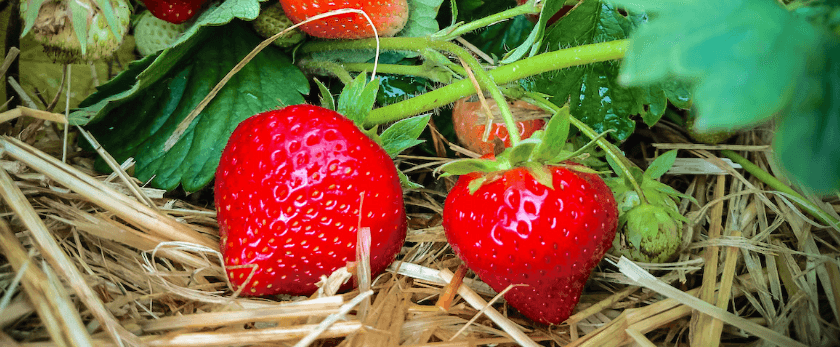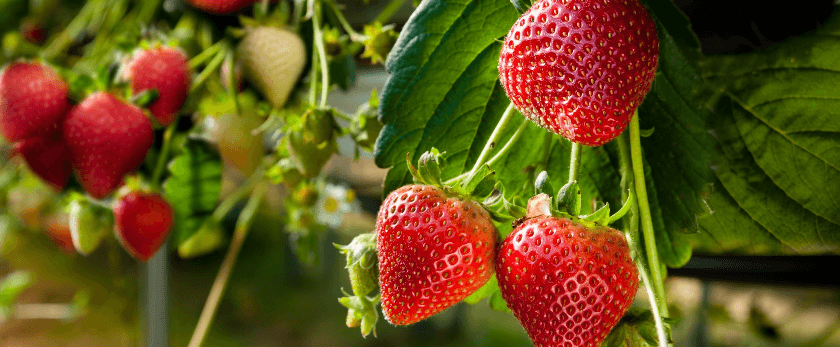Strawberries are a delicious and nutritious fruit that can easily be grown in your own backyard. Not only is it a fun and rewarding experience, but it also helps reduce your carbon footprint by reducing the need for transportation and packaging. In this article, we will discuss how to care for your strawberry plants, the best time to grow them, and common problems you may encounter. Let's get started!
How to Care for Your Strawberry Plants
Watering
Strawberry plants require consistent moisture to thrive, but they don't like to be waterlogged. The best way to water your plants is to give them a deep soak once a week, making sure the water reaches the roots. If you live in a hot and dry climate, you may need to water more frequently. It's important to keep the soil moist but not soggy.
Light
Strawberry plants need at least 6-8 hours of sunlight per day to produce fruit. If you live in a region with hot summers, it's best to provide some afternoon shade to prevent the plants from getting too hot. If you're growing strawberries indoors, make sure to place them near a sunny window or use grow lights to provide enough light.
Soil
Strawberry plants prefer well-draining, slightly acidic soil with a pH between 5.5-6.5. If your soil is too alkaline, you can add some peat moss or pine needles to lower the pH. It's also essential to keep the soil free of weeds, as they can compete with the plants for nutrients and water.
Fertilizer
Strawberry plants are heavy feeders and require regular fertilization to produce healthy and abundant fruit. You can use organic fertilizers such as compost, manure, or fish emulsion. It's best to fertilize your plants every 2-3 weeks during the growing season. Be careful not to over-fertilize, as it can lead to excessive foliage growth and fewer fruits.
Pruning
Pruning is an essential part of caring for strawberry plants. It helps promote healthy growth and increases fruit production. After the plants have finished fruiting, remove any dead or damaged leaves and runners. You can also thin out the plants by removing any weak or overcrowded ones. This will allow more air and sunlight to reach the remaining plants, promoting better growth.
What is the Best Time to Grow Strawberries?
The best time to grow strawberries depends on your location and climate. In general, strawberries are planted in the early spring or fall. If you live in a colder climate, it's best to plant them in the spring after the last frost. In warmer regions, you can plant them in the fall for a winter harvest. It's essential to choose a variety that is suitable for your climate to ensure a successful harvest.

Common Problems with Strawberries
Pests
Strawberry plants are susceptible to pests such as slugs, snails, aphids, and spider mites. To prevent these pests from damaging your plants, you can use natural methods such as handpicking, using diatomaceous earth, or planting companion plants that repel pests. If the infestation is severe, you can use organic pesticides as a last resort.
Diseases
Strawberry plants can also be affected by various diseases, such as powdery mildew, gray mold, and verticillium wilt. To prevent these diseases, make sure to plant your strawberries in well-draining soil and provide adequate air circulation. You can also use disease-resistant varieties and avoid overhead watering, which can promote the spread of diseases.
Birds
Birds love to feast on ripe strawberries, which can be frustrating for gardeners. To protect your plants, you can use bird netting or scare tactics such as reflective tape or fake predators. You can also plant extra strawberries to share with the birds, so they leave your main crop alone.
Conclusion
Growing your own strawberries is a fun and rewarding experience that also benefits the environment. By following the tips mentioned above, you can successfully grow your own delicious and nutritious strawberries. Remember to choose the right variety for your climate, provide adequate care, and be on the lookout for pests and diseases. Happy growing!










